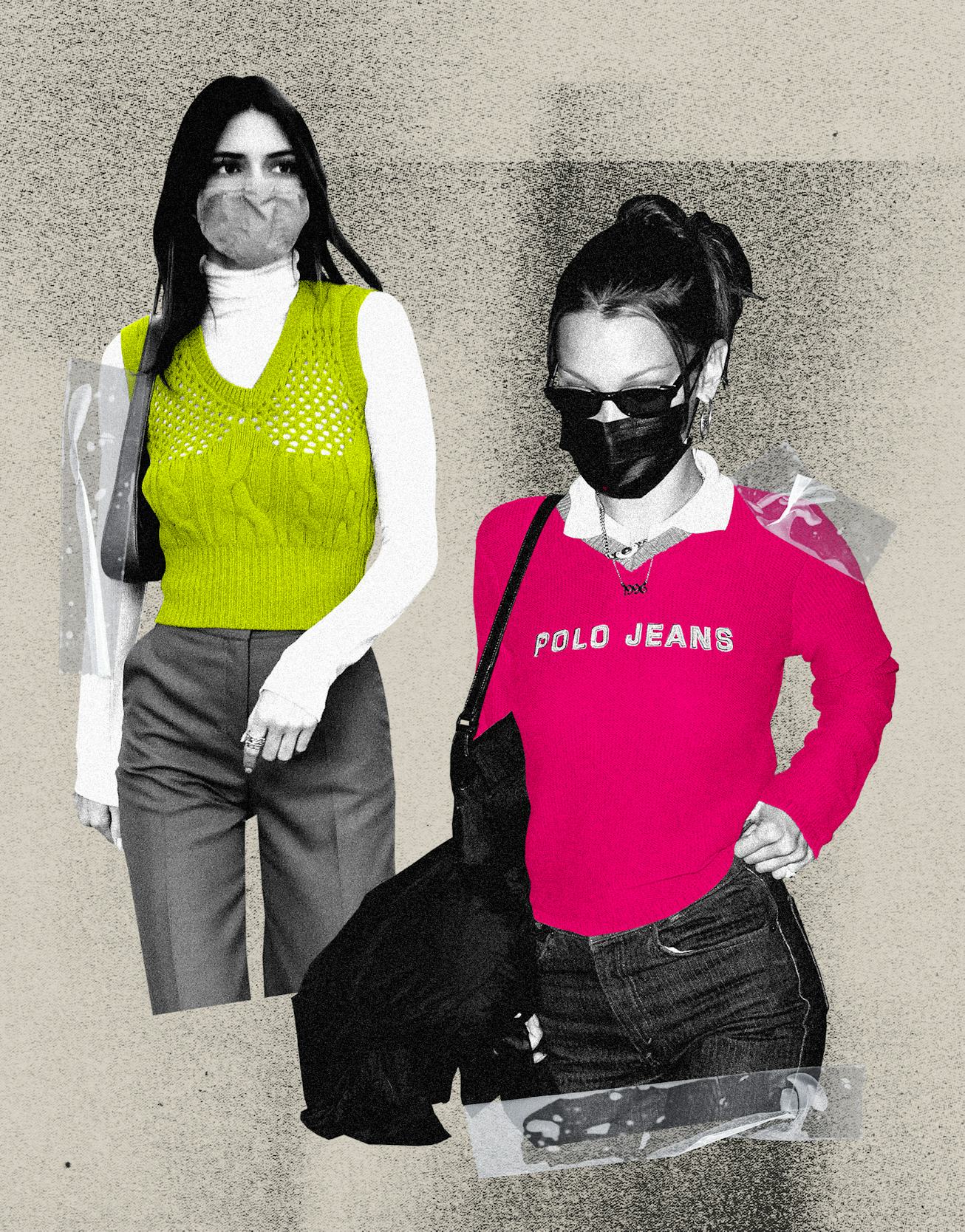
Fashion
How To Find The Best Vintage Sweaters And Cardigans
From preferred fabrics to stain dealbreakers.
Whether it’s an attempt to create a more sustainable closet or a penchant for retro styles, there are a number of reasons why one would buy clothing secondhand. But in most cases, it means you’re quite the savvy spender. Like with the more sought-after, pre-loved categories (think: designer bags and denim), the process of shopping for vintage sweaters and cardigans is technical and requires a certain level of gravitas. Translation: You need the know-how. And with the help of a few secondhand professionals, there’s ample opportunity to smartly stock up on pieces for your knitwear collection.
This starts with a basic understanding of the difference between a cute thrift-store find and true vintage. For collectors like Alexandra Stevens of the highly-curated shop on Instagram, @wear_st.evens, something can’t truly be classified as “vintage” unless it’s at least 20 years old. “The majority of what is in thrift stores isn’t vintage, but rather newer used pieces,” she tells NYLON. “Thrifting is a great way to save money and shop sustainably, but picking out true vintage at [these] stores usually requires some know-how to properly identify.” (Hence why prices tend to be a bit higher at vintage boutiques compared to your favorite local Salvation Army.)
Both are acceptable options when it comes to secondhand shopping for a sweater, but regardless of which route you decide to take, it’s good to know what exactly you’re getting so you know how to value it.
According to ThredUp’s 2020 Resale Report, the secondhand clothing market as a whole is booming. In the U.S. alone, it’s set to triple in value over the next decade, which makes sense considering the surge in secondhand stores setting up shop on your Instagram feed. Among them is Dallas-based Oluchi Vintage, which posts highly anticipated weekly drops and Instagram story flash sales chock full of pre-loved knits. Founder and buyer Cynthia Alozie knows a thing or two about the process and what shoppers should keep an eye out for.
“To me a great vintage [or secondhand] sweater find is a pure cotton knit with a great texture to it,” she explains to NYLON, citing knit henleys with brass buttons or a ribbed knit, quarter-zip sweater as her go-to picks since they're easy to style and good for layering. Practicality aside, buying vintage and pre-owned knitwear made from desirable fabrics is an investment for your closet, disguised as a thrifty find.
“A quality secondhand sweater has shown it can withstand the test of time,” says Alozie. “There’s a pretty good chance they will become forever pieces in your closet.”
Before picking up that oversized cardigan or classic crew neck off the rack at your favorite thrift store or vintage boutique, read the breakdown of the shopping process, below, to make sure these secondhand finds are worth adding to your arsenal.
Shopping For Vintage Sweaters Tip #1: Always Check The Care Tag
This may sound slightly biased coming from a former clothing copywriter, but very few things are as important as what’s on a garment’s care label. From the fabric composition and how it should be washed, to where it was made and, sometimes, even its timeframe origin, the tag will tell you everything you need to know about your pre-loved item. It’s most commonly found in an internal seam along the side of tops, but can live at the neckline as well. In instances when you’re shopping online, oftentimes sellers will put this information under the product descriptions.
Shopping For Vintage Sweaters Tip #2: Desirable Fabrics Are Key
Once you’ve located the care tag online or in-store, you’ll want to make note of what the garment is made from as this is often an indicator of how long it’s going to last. Desirable materials include wool, cotton, and cashmere (to name a few). Plus, the better it feels, the more you’ll be inclined to wear it. “The fabric composition of a vintage or secondhand sweater is super important in terms of comfort and practicality,” says Alozie. “[They] get a lot of wear so I like to go for thick natural fibers that are soft on the skin, don’t hold odors, and can be easily washed.”
Shopping For Vintage Sweaters Tip #3: Follow The Care Instructions
There’s a good chance you’ve taken a look at the care instructions on a garment and thought to yourself that they were negotiable. This is not one of those times. It’s important to identify how a vintage sweater should be cared for before you take it home in order to ensure you’re up for the task and will avoid any accidental shrinkage or unraveling. Once you do decide on an item, diligently following the instructions will guarantee your purchase will withstand years of wear.
Shopping For Vintage Sweaters Tip #4: Some Stains Are Dealbreakers
If you’re trying to convince yourself that you’ll be able to get a stain out of a vintage sweater before you buy it, don’t — or at least get an understanding of what you’re looking at. Wet-appearing spots that are dry to the touch are likely oil-based, meaning the odds of them coming out in the wash are slim to none. The same can be said about (some) grass, wine, and pen-related blemishes, too.
Shopping For Vintage Sweaters Tip #5: Fit Is Important, But Not Everything
The sizing on most vintage clothing items varies according to era, which can make shopping for items online tricky. But when it comes to buying a secondhand sweater, one of the best parts is a fairly generous fit. That said, if the dimensions are available or you're able to try it on, we suggest doing so to get a feel for the general ballpark you want to be in. Otherwise, don’t be afraid if the size on the tag isn’t at all what you were expecting.